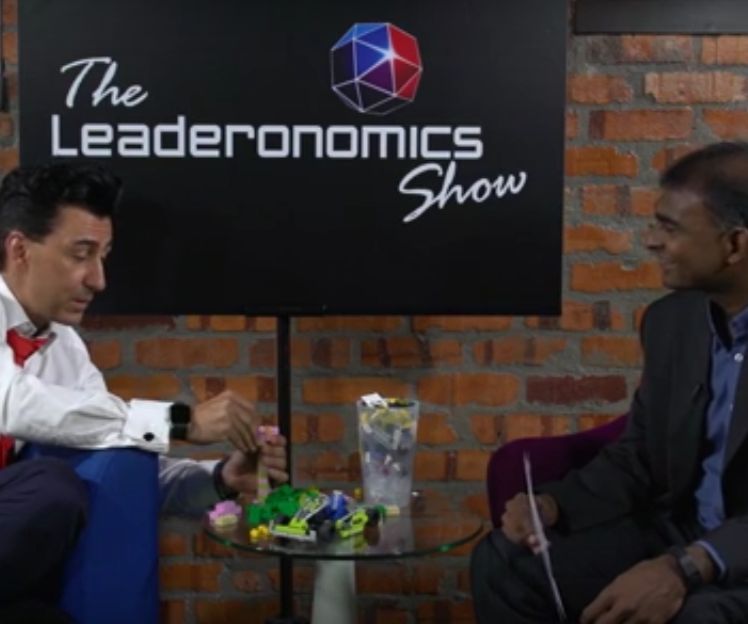The Leadership Vantage: Seeing The Forest And The Trees

I have been working in the area of strategy and planning for the past 17 years and I would have thought I had seen everything at this point. I have worked with many companies which at some point have been considered to be the most innovative companies that the world has ever known.
I had a client whose company was once known as the leader for lighting after World War II and was one of the pioneers of the compact disc in the 80s and 90s only to suffer in more recent days to commoditisation as cheaper products, most of which are copies of their own designs, are flooding the markets from China.
One thing is inevitable and that is “change”. There are no hard feelings about it, when we realise that we simply have to innovate.
Industry structures shift and those who fail to see these changes early when they start to happen usually are the ones who are hurt the most.
This failure to see the shifting environment has resulted in some of the most harrowing examples of restructuring and lay-offs in corporate history.
Leaders need a better vantage point to see what is going on. Change management gurus have headed up the boardrooms to develop breakthrough strategies and introduce game-changing strategies to steer the company in new directions.
Some have been more successful than others. Many, however, always attribute successful changes to leaders who had the ability to see the big picture and determine industry shifts that were going to change the rules of the game.
The likes of Bill Gates and Steve Jobs were able to usher in the era of personal computing in the 80s through their forward thinking perspectives.
The airline industry is close to 100 years old and the industry still continues to shift on both extremes from the highly differentiated Virgin Atlantic to the reconstruction caused by the budget airline segment led by the likes of Southwest Airlines and AirAsia.
The ability to see the big picture and go beyond what everyone else is thinking has been the determining talent that has led to the prosperity of innovative companies, many of which were able to thrive in periods of volatility and challenge.
The role of leaders in having to identify changes that will affect their organisation and industry for better or for worse cannot be understated.
While it is very unlikely that we can have a reincarnation of Steve Jobs or have the divergent creativity of Sir Richard Branson on demand, the ability to see the big picture is a key talent of any strategic leader.
The question that remains however is whether or not having the ability to see the big picture is enough? It is obviously a “yes” in a situation where the organisation has a crisis of innovation and needs to get unstuck from its status quo. A fresh perspective is always needed.
The importance of having a good vantage point is that it allows the leader to take a step back and look at the bigger picture.
It allows him to see what is happening in the world outside the organisation and its impending effects to the current strategy.
It allows the leader to get out of their own processes and go deeper into the employee and customer experience. This is an ability that we would like to call “Seeing the Forest and the Trees”.
The former notion is that a leader does either-or. Either he focuses only on the big picture (forest) or he sees them for the trees (internal processes). There is a danger of being too much of either.
When you only see the bigger picture, you might find yourself in a position where you believe you have motivated people on the new strategy, only to find months later that nothing seems to be moving.
On the other hand, if a leader is too caught up with the details, processes and procedures, there is a great danger that the organisation might not respond quickly enough to changes in the industry and customer demands.
Worse still is when stakeholders get impatient in not seeing immediate results of the intended changes and lose confidence in both their leader and the team.
Pink slips are being issued, the leader is replaced and the company starts all over again, and that is if it has not imploded.
This then sends ripples outside in the marketplace and the public loses confidence in the company and its management. Everyone says goodbye.
Seeing the forest and the trees is having the ability to view things from different lenses at different points in time when they are needed:
1. Situational appraisal and scenario analysis: Use a big picture perspective and engage your team in looking at the facts together and have a shared appreciation to determine a broad strategy. Develop a broad sense of vision and direction amidst the sea of competition. See the future through a telescope and build a navigational roadmap.
2. Use other people’s perspectives in visualising different scenarios that could affect the execution of your strategy: In this case you are not using your own lens but that of your Cross Functional Team (CFT). This gives a leader a chiastic perspective across the organisation. This helps the leaders anticipate barriers to execution.
3. Have a diagnostic mindset: Sometimes a leader needs to take a “deep-dive” into their own organisation to identify constraints to execution. These constraints could be motivational or systemic. They could also be resource based.
At this point a leader needs to have a lens similar to a microscope to get to root causes of problems and deploy measures for corrective action.
4. Instrument flying: Have a dashboard for navigating the strategy. Build a system for measuring progress and milestones. Have the necessary indicators for strategic traction that measure finances, learning and growth, customer perspectives and internal processes. Use a balanced scorecard perspective.
The good news for the leader is that he does not have to be omnipotent to see the forest and the trees.
He needs only to have the right perspective at the right given time and if he chooses to specialise in certain aspects, then a true leader recognises the need for the other perspectives and gives way to empower others to formulate and execute strategy.
Gone are the days that one leader does all. Leadership in the Age of Execution as I wrote about earlier demands more collaboration and a broader cross-sectional perspective to make things work.
This demands a certain level of leadership from all of us and we cannot have a zero-sum perspective of power and influence.
Having a leadership vantage makes us realise that strategy goes beyond the self or the leader. And while it may take a visionary to cast direction, it takes a whole crew to navigate a ship to its destination especially in troubled waters. Use the right lenses and get the right perspective.
Leadership





